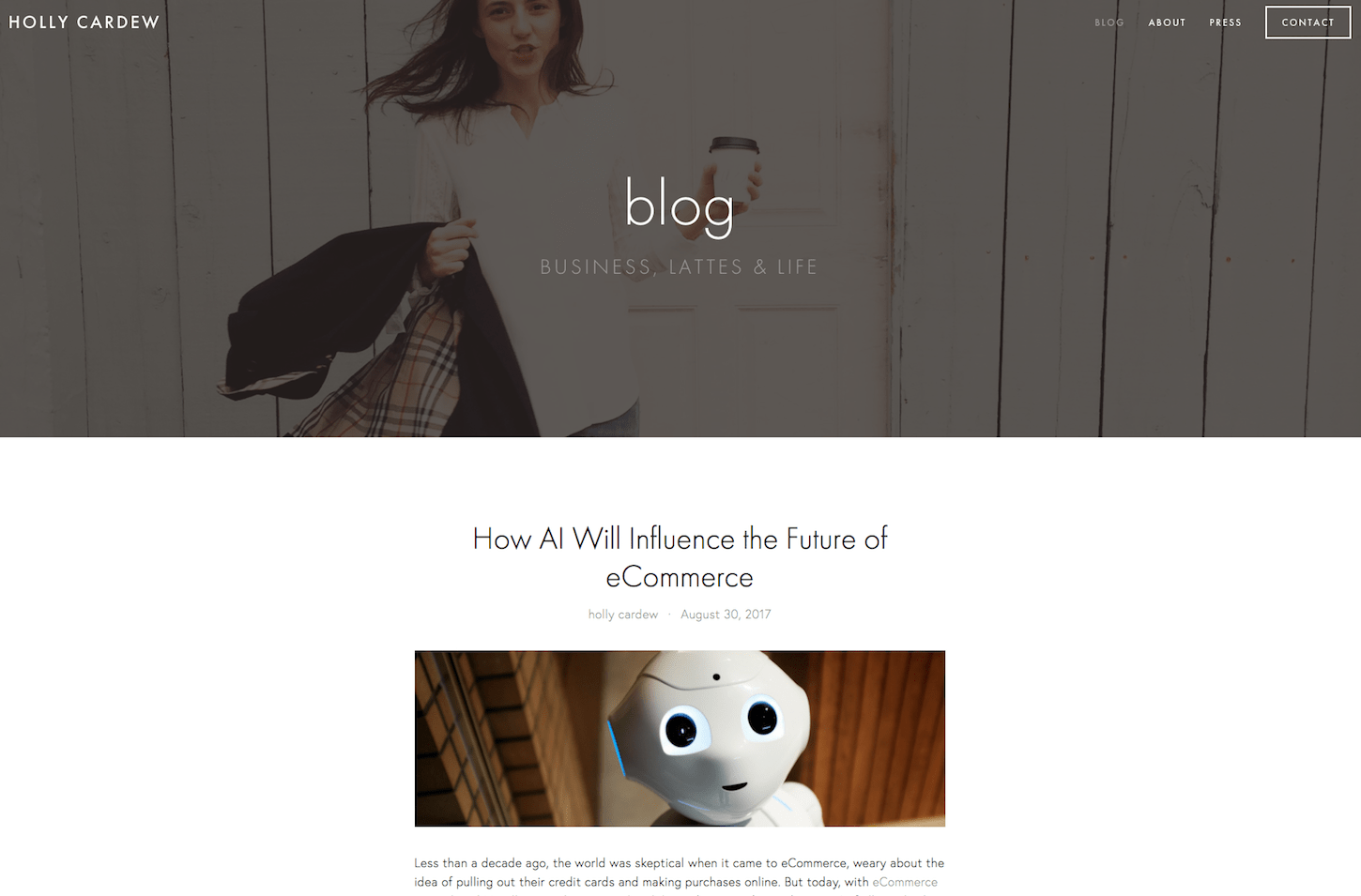As a freelancer, agency founder, or app shop owner, you already know that building a brand is an important step to getting your business off the ground. You need a way to set your business apart, and branding is the answer. But branding isn’t just key for your business: as an entrepreneur, building a personal brand for yourself is just as important.
Personal branding does a lot of good for you and your business. In our hyper-connected world, it’s how you establish yourself in your niche field. It’s a way for you to make sure that your audience sees you the way you want to be seen — and, by extension, your business. By figuring out your personal brand and how to share it with your audience, you’ll start building up client lists and driving sales.
But what is personal branding? Here’s the thing: you already have a personal brand. You have a professional reputation whether you choose to cultivate it or not. Your personal brand is just a way for you to share that good reputation in a consistent way. That’s powerful for any professional, and you can leverage it to make great things happen.
Why you need a personal brand
First, let’s talk about why you need a personal brand. Your personal brand is so much more than having a logo. If you do it right, personal branding can grow your business in all kinds of profound ways.
"When you commit to your personal brand and start putting yourself out there, you’ll find that your ideal clients will start finding you."
When you commit to your personal brand and start putting yourself out there, you’ll find that your ideal clients will start finding you. The people you want to work with will connect with your personality. You’ll differentiate yourself from your competition by showing off your aesthetic, skills, and approach to business. And, maybe most importantly, you’ll start forging real connections with clients and other professionals. Putting your personality out there attracts like-minded people, and that’s an avenue for growth.
Here are some ways that building your personal brand will benefit you.
1. Find your ideal clients

Kurt Elster is a Shopify Plus Partner and founder of Ethercycle, an ecommerce consultancy for Shopify merchants. Kurt has a strong personal brand that’s become a powerful tool for his business. His brand has helped him connect with his ideal clients by giving his business a healthy dose of personality.
Some people will be like, this guy is a cornball, and they’ll unsubscribe from my newsletter. That’s fine because we weren’t going to get along anyway.
“The more of my personality I’ve worked into my business and the more open I’ve been, the better it gets,” Kurt explains. “I’m separating the wheat from the chaff — some people will be like, this guy is a cornball, and they’ll unsubscribe from my newsletter. That’s fine because we weren’t going to get along anyway. The more of yourself you put into it, you find your tribe that way.”
2. Separate yourself from the competition

Kurt isn’t the only entrepreneur to believe in the power of personal branding. Jeremy Watt and Julie Brown are Shopify Experts and founders of the design studio UP LATER THAN YOU and clothing brand Province of Canada. For them, personal branding has been one of the keys to marketing their businesses.
“Personal branding is a conscious decision and important to our business,” Julie says. “Clients can see our aesthetic from our personal brands and know that we uphold a certain standard.”
“People do their research when they’re hiring a company to do design work,” Jeremy adds. “Personal branding is not something you can take lightly. You need to make sure your [social] channels are visually appealing so that if clients are looking at it, it’s a good representation of who you are.”
Having a personal brand in addition to your business’ brand helps clients see you as the expert. It establishes you as the brains behind the operation, and helps build trust with your audience. When they associate you with being awesome at your job, it’s only good news for your business.
You might also like: Like Moths to a Flame: How to Attract (and Keep) Your Dream Clients.
3. Build real relationships
When Kurt Elster decided to commit fully to his personal brand, he redesigned his business website to tie in closely with his personality. The results of the new brand launch were amazing — in a year, the conversion rate on the site doubled.
According to Kurt, there’s a very good reason for that.
“People relate to people,” he said. “You do what you do because you’re passionate, so put your face on it. No one is buying from an about page that’s devoid of personality.”
Building relationships and making real connections with clients requires you to put your personality on display. In the internet age, that can be daunting. But Kurt’s experience proves that having personality is never a bad thing. In fact, people crave it.

Djuro Selec is co-founder of Space Squirrel, an ecommerce and app development agency focused on the Shopify platform. Djuro’s perspective on branding matches Kurt’s thoughts.
“People will connect to a face quicker than to a logo. Your little personality traits will only make you, and in turn your brand, more memorable.”
If you’re a freelancer, the importance of a personal brand is paramount. As a freelancer, you are your brand. Claiming control of your reputation by building a personal brand is how you establish yourself as an expert, and how you draw clients to you.
Claiming control of your reputation by building a personal brand is how you establish yourself as an expert, and how you draw clients to you.
"By branding yourself as an individual, you add a whole new layer of trust to your interactions with clients. This gives your business so many more avenues to grow — and you’ll meet some great people along the way."
Building that kind of trust with clients is key. People are far more likely to trust recommendations from individuals than businesses. By branding yourself as an individual, you add a whole new layer of trust to your interactions with clients. This gives your business so many more avenues to grow — and you’ll meet some great people along the way.
How to build a personal brand
Now you know the why, but how do you build a personal brand? Personal branding is obviously a lot more than a logo. Your personal brand encompasses every way in which you interact with clients, from your look, to your voice, to your attitude.
That may sound overwhelming, but don’t freak out. The best part of your personal brand is that it’s all about you. Personal brands only work when they’re authentic, which means that you don’t need to worry about making anything up. You’ve already got everything you need.
Here are some tips on how to figure out and build your personal brand.
1. Ask yourself some questions
To start building a personal brand, you’ll want to start by asking yourself some key questions about yourself and your business. These questions will help you identify what kinds of things you can include in your branding, and what things will make your brand stand out. Grab a pen and paper, and start brainstorming some answers to the questions below.
- What are your goals for your business?
- What makes you unique among your competition?
- How did you get into your industry?
- Why did you start your own business?
- What things do you value?
- Who is your target audience?
Answer these questions as honestly as you can. You want to start identifying the factors about you that stand out to others. If you’re struggling, ask a friend to be honest with you. What aspects of your personality do others associate with you? These will form the cornerstones of your personal brand.
2. Learn your own voice
The next step to establishing your brand is to find your voice and tell your story. This is one of the big ways in which your brand really starts to take shape. Humans connect with stories, so telling a really good story is how you can forge a real connection with clients. Don’t be afraid to include a bunch of personality — your story is going to be what sets you apart.
Your story can be about how you got into your industry, how you decided to start a business, why you care so deeply about the work you do. As an entrepreneur or freelancer, you probably have a great story of how you decided to launch your business, and that’s something your audience will want to hear. Your personal brand story is something you’re going to share over and over again.
Writing out your story may take a number of tries as you work out your voice. If you’re used to writing really professionally, finding your own unique voice can take some time. You don’t want to come across as stilted or formal — that’s not a voice people will connect with, because that’s not how people actually talk.
Kurt from Ethercycle struggled to find his voice at the start, too. For him, it was Siri to the rescue.
“I dictated to my computer, and said everything I wanted to say. That helped me learn what my actual voice is,” Kurt said. “I thought I hated writing, but it was because I was trying to write like someone else. I let that go and started talking the way I do. I learned my own voice by telling my story to Siri.”
Do what it takes to learn your voice, and you’ll start to feel a lot more comfortable with your personal brand. You’ll be able to craft copy and write for your business in your own voice, building your brand and connecting more with your clients.
Start putting your brand to work
You’ve figured out your brand cornerstones, you’ve started to get familiar with your real voice, and you’ve figured out how to tell your story. Now it’s time to put your personal brand to work.
"Putting your brand to work means finding your niche, putting yourself out there, and making connections. You want to get to know your community."
Putting your brand to work means finding your niche, putting yourself out there, and making connections. You want to get to know your community.
Knowing your community means being able to identify what your audience needs, which gives your business an edge. It also gives you an opportunity to help people out, establishing yourself as an expert in your industry.
You’ll also start to build relationships in your industry, both with clients and other industry professionals. This is powerful, and comes with all kinds of important benefits.
1. Share your story

Once you have your brand story, it’s time to share it. Sharing your brand story is where the magic happens. For Björn Forsberg, founder of FORSBERG+two, a development and design studio focused on Shopify apps, sharing his story has become the key to building a network.
For Björn Forsberg, founder of FORSBERG+two, a development and design studio focused on Shopify apps, sharing his story has become the key to building a network.
“Participating in my community and sharing as much as possible has had the biggest impact on building my brand,” he says. “I’ve looked more at building relationships, sharing knowledge, and learning what I can from others. So I've written blog posts, spoken at Shopify meetups, and done a few podcast interviews telling my little story, which is a personal one.”
Sharing your story helps you find your people and build powerful connections. But to get there, you have to put your brand — and, therefore, yourself — out there.
2. Become an expert

But how do you start putting yourself out there?
Holly Cardew is the founder of Pixc, a platform to help eCommerce stores edit and optimize their product photos so they can increase sales. She is also the author of the Shopify Complete Guide to DIY Product Photography. Holly has put herself and her personal brand out there by participating in her community and identifying her audience’s needs. By being present and accessible, Holly has been able to establish herself as an expert voice.
“Over the years, I’ve given talks, provided mentorship, participated in webinars, attended more events than I can even remember, and written about topics that I repeatedly get asked about. I think the combination of these things have helped to build my personal brand.”
Holly’s blog is a good example of how you can start establishing yourself and building your brand. By writing answers to the questions she hears often, Holly is able to continuously establish her expertise.

Find your niche, listen to the questions that come up over and over again, and become a trusted source for answers to those questions. It’s the strongest way to establish your brand and gain trust with your audience — and that’s great news for business.
3. Make connections
When you start putting yourself out there, you’ll start driving those real connections that are so powerful for entrepreneurs. Your voice will attract the kind of people you want to connect with, and you’ll start building trust.

Kaitlin Fontenot is the founder of Love Kait Design Studio. For Kaitlin, making real connections is the central part of her personal brand.
I find that those personal aspects are what brings my followers and clients that much closer to me.
“By being able to truly connect with them in real-life situations, sharing vulnerable behind-the-scenes moments, and being honest and upfront about how difficult life as a small business owner can be, I've been able to garner quality relationships that will last a lifetime,” Kaitlin says. “I find that those personal aspects are what brings my followers and clients that much closer to me.”
Sharing your story, establishing yourself as an expert, and making real connections: these are all benefits of embracing your personal brand.
4. Keep it up
When you start having these kinds of conversations with your audiences, you start building trust. But the key to building that trust and making your brand strong is to stay consistent. All of your personal channels should reflect your brand. That means using the same photo or logo, keeping the same voice, and staying constantly true to yourself. People should know what to expect when they engage with you.
The best part about your new brand is that it’s all about you. If you’ve stayed authentic, your brand should reflect your personality and the ways you already do business. That means that your new branding will only serve to reinforce what you’re already great at. At the heart of your brand, there’s you .
Keeping your online presences active is important, too. If you commit to a channel, remember that potential clients will be looking you up. An inactive profile is worse than no profile at all.
If you’re in a digital business, you gotta keep it fresh, current, and consistent.
“You gotta keep it up,” Jeremy of UP LATER THAN YOU says. “If you go to Instagram and someone hasn’t posted in six months, you ask yourself if they’re really dialled in. It’s a shame, but we judge people by social media. If you’re in a digital business, you gotta keep it fresh, current, and consistent.”
Understand where your audiences are, and put your greatest effort into those channels. Are they a LinkedIn crowd, or are you more likely to find them browsing Instagram? Knowing this is important: you’ll know where to focus your branding efforts, and this will help you target your ideal client even further.
For Kaitlin, identifying where to focus her personal branding efforts has been a boon to understanding her clients.
“Instagram and Pinterest all the way!” she says. “I would say approximately 90 percent of my clientele come directly from Instagram and I think it's because of a few things: I'm able to really share my story through visual content and Instagram stories, we're able to make a very quick connection via comments and direct messaging, and it's a visual moodboard of my life and my design process. My clients can pretty much look at my account and see whether we're a good fit immediately, and I love that.”
Kaitlin’s Instagram is a reflection of her personal visual identity and a place for her to share her story. The combination of these two things can be powerful, as she demonstrates in this post:
Learn where your audience lives and keep up a consistent presence there. Your audience will learn to trust you, and potential clients will connect with you all the more.
You might also like: How to Brand Your Shopify App to Earn More in the App Store.
The power of your personal brand
Personal branding comes across as a big, hazy concept, but at its heart it’s actually pretty simple: personal branding is how you share who you are with your target audiences. By building your personal brand, you’ll identify ideal clients, separate yourself from your competition, and forge real relationships with clients and other professionals.
Taking some time to formalize and define your personal brand will help you build strong name recognition and credibility in your business. It’ll help you put yourself out there, and start building positive relationships. And for businesses of any size, that’s always a good thing.
What actions have you taken to build your personal brand? Let us know in the comments below!

